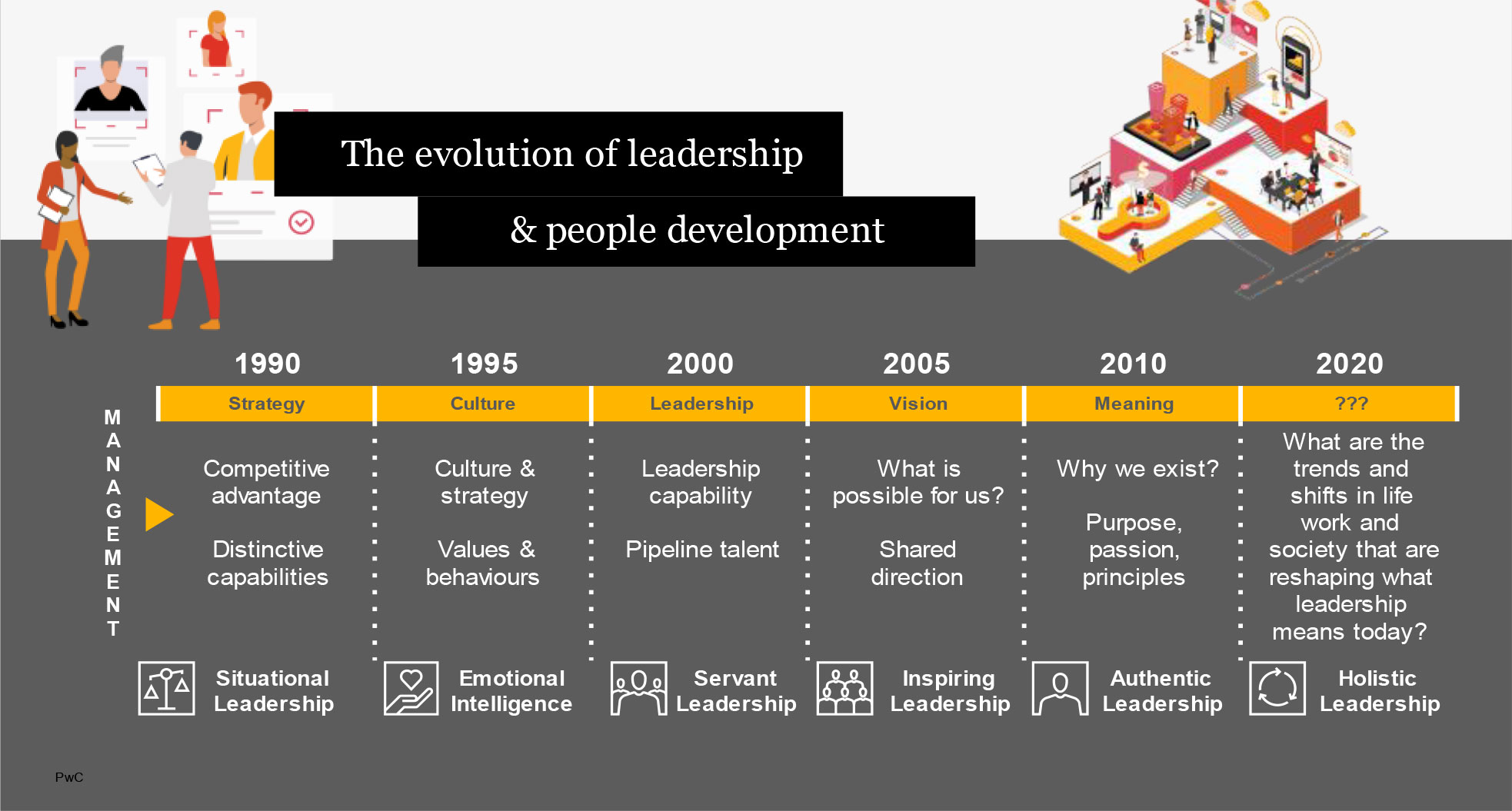
Evolution Of Leadership
pdf / 191.28 KB
downloadThe evolution of leadership theory and practice

Situational leadership (adapted): there are 4 leadership stages (direct, coach, delegate, empower) according to people’s developmental level. 1. When people are new to the work or the process changes, leaders should be directive and establish guidelines and teach what is required. 2. When people are confident and “get it” leaders shift to coaching and help them “get it better.” 3. When they are competent leaders should delegate and give greater autonomy and responsibility, but not ultimate authority 4. The final stage with high confidence is empowerment giving ownership and accountability. Time spent in each stage is dependent on development and is different for different people and at different times. The focus here is building distinctive capabilities which are a pre-requisite for strategic execution and competitive advantage.
- Emotional intelligence: this is the intelligent use of emotions and requires empathy to read emotional tone and the ability to use different emotions to aid the engagement and development of people. There is a time for a leader to be sad, exuberant, reflective, excited etc. to create the right mood to help people and teams to perform. The focus is building strong cultures that align strategy and culture and values and behaviour.
- Servant leadership: the leader is a servant of the people they lead and so serves others first and then themselves. People are not given to the leader, rather the leader is given to individuals and the team and becomes a key part of the leadership pipeline for building more leaders for today and the future.
- Inspiring leadership: to inspire is to “awaken something within the individual” and have them excited about what is possible for them and for the team. The focus is to “ignite the human spirit”, build shared direction and create alignment in dispersed teams and with others working remotely.We are now in transition from performance cultures to more humanistic ones which put people and their development at the centre and the capacity to form deeper relationships as core to what they do.
- Authentic leadership: a decline in trust in leaders across politics, institutions and corporations produced a desire for leaders who were trustworthy – that is leaders who were genuine, who spoke from the heart and the head, and who were committed to the “greater good” and for a deeper purpose beyond self-interest. The focus is the difference we make for the customers and communities we serve.
- Holistic leadership: In a VUCA world (volatile, uncertain, complex, ambiguous) there is a demand for leadership that can integrate our professional life into the totality of the life we lead. In this way our professional life is an important part, but is not the whole part, and leadership is primarily who we are and what we stand for and is more than just the sum of the roles we play in various parts of our lives. Since every life is unique, we each have to integrate the parts into a coherent whole and in this way, we can grow, learn and evolve our own unique leadership potential to deal with the complexity of the lives we lead and the challenges and opportunities we collectively face.